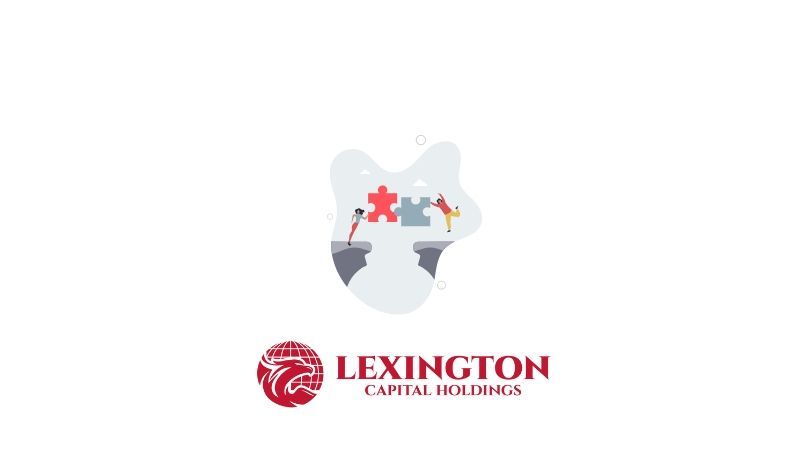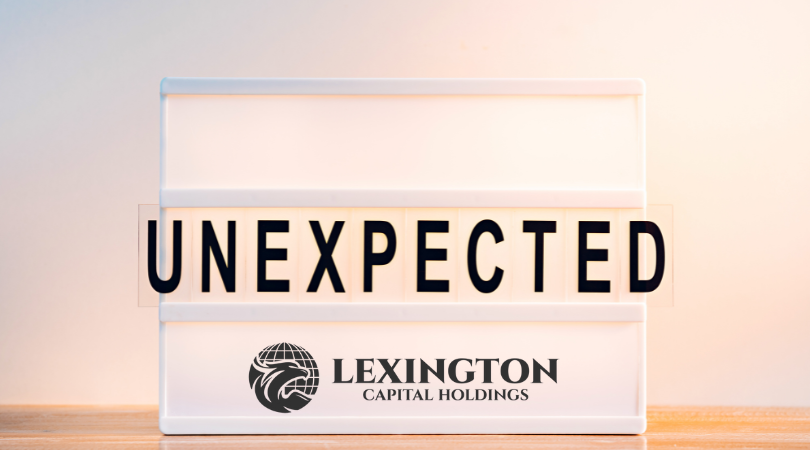2025 Trends Every Business Owner Needs to Know
2025 Trends Every Business Owner Needs to Know
With 2025 right around the corner, businesses are gearing up for a year filled with new opportunities and challenges. The way we work, connect with customers, and leverage technology is evolving faster than ever, and staying ahead of these changes is the key to thriving in an increasingly competitive market. For business owners, this is the perfect time to adapt, innovate, and position your company for long-term success. Here’s a look at the trends that will dominate 2025 and how you can prepare to make the most of them.
1. The Rise of AI-Driven Personalization
Artificial intelligence (AI) is no longer a futuristic concept—it’s a critical tool for delivering personalized customer experiences. In 2025, businesses will need to leverage AI-powered tools to analyze customer data, predict behaviors, and tailor their offerings.
What to Do:
- Invest in AI software that enhances customer interactions, such as chatbots, recommendation engines, and predictive analytics.
- Use AI to automate repetitive tasks, freeing up time for strategic initiatives.
- Implement personalization strategies in marketing campaigns to boost engagement and customer loyalty.
2. Sustainability as a Core Business Strategy
Sustainability will move from a “nice to have” to a business imperative. Consumers, particularly Millennials and Gen Z, demand eco-friendly products and transparent supply chains. Businesses that ignore sustainability may risk losing customers to more environmentally conscious competitors.
What to Do:
- Transition to sustainable practices, such as reducing waste, using renewable energy, or sourcing ethical materials.
- Highlight your sustainability efforts in marketing to build trust and appeal to socially-conscious consumers.
- Consider offering eco-friendly product lines or packaging to align with consumer preferences.
3. Hybrid Work Models Are Here to Stay
The pandemic permanently shifted how we work. In 2025, hybrid work environments—combining remote and in-office work—will continue to dominate. Businesses that fail to adapt risk losing top talent to more flexible competitors.
What to Do:
- Develop policies that allow for flexible work arrangements while maintaining productivity and collaboration.
- Invest in technology to support hybrid work, such as video conferencing tools and project management software.
- Redefine office spaces to focus on collaboration and creativity rather than traditional desk setups.
4. Blockchain and Digital Payments Expand
Blockchain technology is evolving beyond cryptocurrencies and entering mainstream business operations. From securing supply chains to streamlining digital payments, blockchain adoption will grow significantly in 2025.
What to Do:
- Explore blockchain solutions to improve transparency and security in your supply chain.
- Offer diverse digital payment options, including cryptocurrency, to appeal to tech-savvy consumers.
- Stay informed about regulations and best practices in blockchain technology.
5. Short-Form Video Dominates Marketing
Social media platforms like TikTok, Instagram Reels, and YouTube Shorts have proven that short-form video is one of the most effective ways to engage audiences. In 2025, this trend will only grow stronger, making it a must-have in your marketing strategy.
What to Do:
- Create high-quality, engaging short-form videos that highlight your products, services, or company culture.
- Focus on storytelling and authenticity to connect with your audience.
- Use data-driven insights to determine which video content resonates most with your target market.
6. Health and Wellness Integration
Consumers are increasingly prioritizing health and wellness in their lifestyles, and businesses are taking note. Whether you’re in retail, hospitality, or services, offering wellness-focused options will help you capture a growing market.
What to Do:
- Incorporate health-conscious offerings, such as organic products or wellness programs, into your business model.
- Partner with wellness brands or experts to enhance your offerings.
- Showcase a commitment to employee well-being through initiatives that promote mental health and work-life balance.
7. Data Privacy and Cybersecurity Take Center Stage
With increasing digitalization, cybersecurity threats are also rising. Customers are becoming more concerned about how their data is handled. In 2025, businesses must prioritize data privacy to maintain trust and comply with stricter regulations.
What to Do:
- Conduct regular security audits to identify vulnerabilities in your systems.
- Implement robust cybersecurity measures, including encryption and multi-factor authentication.
- Be transparent about data collection practices and provide customers with clear options for data sharing.
8. The Shift to Local and Experiential Retail
As consumers seek authentic, meaningful experiences, retail businesses will need to focus on providing more than just products. Local sourcing, unique in-store experiences, and community engagement will become key differentiators.
What to Do:
- Offer experiences that go beyond traditional shopping, such as workshops, events, or exclusive product launches.
- Partner with local businesses or artisans to highlight your community connections.
- Use experiential marketing to create memorable interactions with your brand.
9. The Growth of Automation in Every Industry
Automation will continue to transform industries, from manufacturing to service delivery. Businesses that integrate automation into their operations will enjoy improved efficiency, cost savings, and scalability.
What to Do:
- Identify repetitive or manual tasks that can be automated to save time and resources.
- Use automation to enhance customer service, such as through automated email campaigns or appointment scheduling.
- Invest in training programs to upskill employees on how to work alongside new technologies.
The Bottom Line
2025 is shaping up to be a year of innovation, sustainability, and transformation. By embracing these trends, business owners can future-proof their operations, enhance customer loyalty, and build thriving enterprises. The key is to stay informed, agile, and ready to adapt to the ever-changing landscape. The businesses that anticipate and implement these changes today will be the leaders of tomorrow. Are you ready to take the leap?

When you apply for business funding, your application goes through a critical stage—underwriting. This is where lenders evaluate risk and determine whether your business qualifies for financing, and under what terms. Understanding what underwriters look for can help you strengthen your application, avoid delays, and increase your approval odds.

Not every business enjoys a steady stream of income. For many companies—especially those in seasonal industries, contracting, or project-based work—revenue can shift dramatically from month to month. These ups and downs are normal, but they can make managing cash flow, payroll, and operating expenses challenging. At Lexington Capital Holdings, we understand that fluctuating revenue doesn’t mean instability—it just means you need the right financial tools to stay balanced and grow confidently.

The Challenge of Hyper-Growth For many startups, growth isn’t the problem—it’s managing it. Rapid scaling demands capital for hiring, marketing, technology, and operations. But too often, founders find themselves cash-strapped right when they need resources the most. Choosing the right financing strategy can be the difference between sustainable growth and burning out too soon.

When it comes to business financing, the terms you secure are just as important as the funding itself. Lower interest rates, flexible repayment schedules, and higher approval amounts can mean the difference between simply surviving and setting your business up to thrive. The good news? Business owners often have more negotiating power than they realize. At Lexington Capital Holdings, we’ve seen firsthand how preparation and strategy can help secure stronger terms. Here’s how you can do the same:

For many businesses, waiting on customer payments can feel like standing still when you’re ready to move forward. Delayed invoices, extended payment terms, or slow collections create cash flow gaps that make it harder to cover expenses, pay employees, or seize new opportunities. The truth is—even successful, profitable companies face this challenge. The key isn’t avoiding it, but managing it strategically with the right funding solutions

Securing business funding is a milestone—but the real impact comes from how you put that capital to work. Every dollar borrowed should fuel momentum, strengthen operations, and generate measurable returns. Unfortunately, too many businesses stop at “getting approved” and miss the chance to maximize their return on investment (ROI). At Lexington Capital Holdings, we believe funding isn’t just about access to capital—it’s about creating opportunity. Here’s how to ensure your financing delivers the highest ROI:

In today’s fast-paced business environment, standing out from the competition requires more than just great products and services—it takes strategy, timing, and smart financial decisions. One of the most overlooked tools in building and maintaining a competitive advantage is business financing. When leveraged correctly, financing doesn’t just help you “get by”; it can actually position your business to outpace competitors and capture new opportunities.

In business, surprises aren’t a matter of if—they’re a matter of when. Whether it’s a sudden equipment breakdown, an unexpected dip in sales, or a market shift that requires quick adaptation, unforeseen expenses can test even the most successful companies. The difference between thriving and struggling often comes down to how well you’ve prepared.

When most business owners hear the word debt, it sparks feelings of stress or risk. But here’s the truth—debt isn’t always a bad thing. In fact, when managed strategically, debt can become one of the most powerful tools to grow, stabilize, and scale your business. At Lexington Capital Holdings, we work with business owners every day who are navigating this very question: Is taking on debt the right move for me? Let’s break down the difference between “good” and “bad” debt so you can make informed financial decisions.

In today’s business world, financing options are everywhere—but choosing the right path can feel overwhelming. From traditional bank loans to alternative lending solutions, the fine print and fast-changing requirements often leave business owners spending more time deciphering funding terms than actually running their businesses. That’s where the value of a dedicated funding advisor truly shines. At Lexington Capital Holdings, we’ve seen firsthand how personalized guidance can transform the funding experience for business owners of all sizes.

